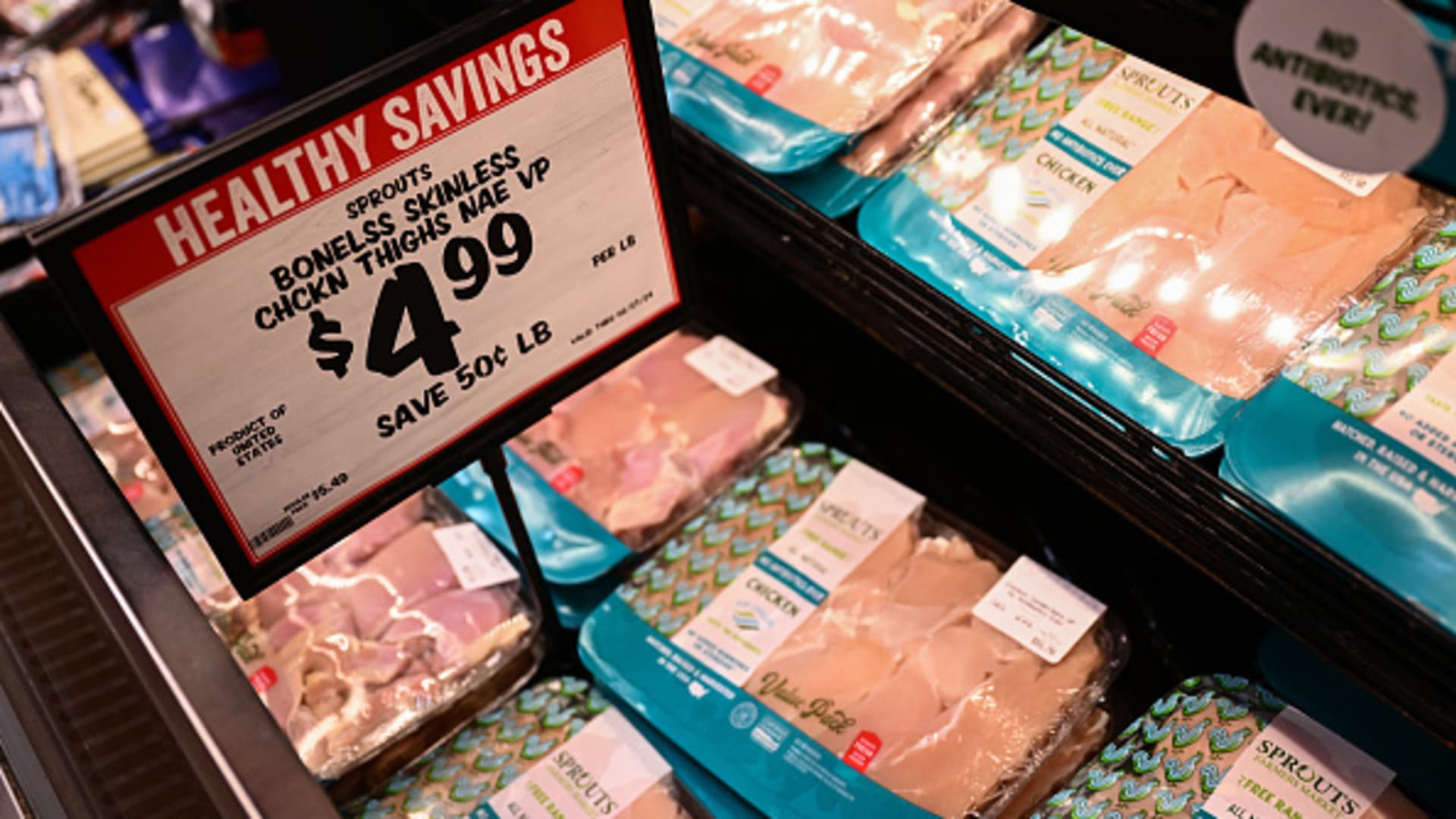Inflation rose again in February, keeping the Federal Reserve on course to wait at least until the summer before starting to lower interest rates.
The consumer price index, a broad measure of goods and services costs, increased 0.4% for the month and 3.2% from a year ago, the Labor Department’s Bureau of Labor Statistics reported Tuesday. The monthly gain was in line with expectations, but the annual rate was slightly ahead of the 3.1% forecast from the Dow Jones consensus.
Excluding volatile food and energy prices, core CPI increased 0.4% on the month and was up 3.8% on the year. Both were one-tenth of a percentage point higher than forecast.
While the 12-month pace is off the inflation peak in mid-2022, it remains well above the Fed’s 2% goal as the central bank approaches its two-day policy meeting in a week.
A 2.3% increase in energy costs helped boost the headline inflation number. Food costs were flat on the month, while shelter rose another 0.4%.
The BLS reported that the increases in energy and shelter amounted to more than 60% of the total gain. Gasoline jumped 3.8% on the month while owners’ equivalent rent, a hypothetical gauge of what homeowners could get renting their properties, rose 0.4%. Airline fares posted a 3.6% increase and used vehicles were up 0.5%.
The year-over-year increase for headline CPI was 0.1 percentage point higher than January, while core was one-tenth of a point lower.
Markets showed little initial reaction after the news broke, with futures tied to major stock averages as well as Treasury yields slightly higher.
While the 12-month pace is off the inflation peak in mid-2022, it remains well above the Fed’s 2% goal as the central bank approaches its two-day policy meeting in a week.
Fed officials in recent weeks both have signaled that rate cuts are likely at some point this year and expressed caution about letting up too soon in the battle against high prices. Chair Jerome Powell, in congressional testimony last week, echoed those concerns, though he did mention that the Fed is probably “not far” from the point where it can start easing up on monetary policy.
For financial markets, the shift in the Fed stance from its apparent policy pivot in late 2023 has meant a repricing on the pace of rate cuts. Where futures traders entered the year expecting cuts to start coming in March, with six or seven total on the year, they have pushed out the first cut to June, with three to follow, assuming cuts in quarter percentage point increments.
A bustling economy has helped the Fed focus on incoming data and allowed policymakers to avoid having to rush to cut rates. Gross domestic product expanded at a 2.5% annualized pace in 2023 and is on pace to increase at a 2.5% pace in the first quarter of 2024, according to the Atlanta Fed’s GDPNow tracker.
One key ingredient in that growth has been a resilient consumer boosted by a strong labor market. The economy added another 275,000 nonfarm jobs in February, though the increase skewed heavily to part-time jobs and the unemployment rate rose to 3.9%.
Such strength can be a double-edged sword: While the growth in the face of aggressive rate hikes has bought the Fed time on policy, it also raises concerns that inflation could be more durable than expected.
Housing costs in particular have caused concern.
Shelter comprises about one-third of the CPI weighting and has been slow to decelerate, at least according to the BLS measure. Fed officials see rental prices coming down through the year, and other measures outside the CPI computation of owners-equivalent rent – a hypothetical measure of what property owners can get on the rental market – have shown easing price pressures.
This is breaking news. Please check back here for updates.
